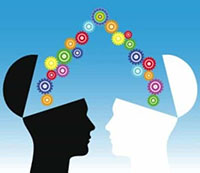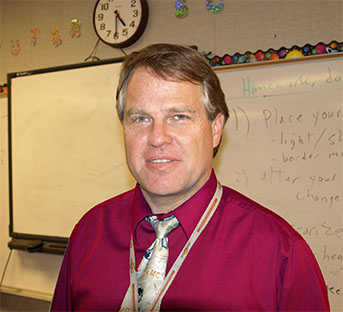
Starting A 21st Century Learning Environment On A limited (Or No) Budget, A ISTE 2018 Presentation
Presented by Richard Styner
This is based on the ISTE Sample Application:
https://conference.iste.org/2017/presenters/pdfs/ISTE_2017_CFP.pdf SlidesSESSION FORMAT:
BYOD (31% acceptance)CONVERTED FORMAT:
Poster (62% acceptance)SESSION FOCUS/TOPIC:
Digital Age Teaching & Learning: Instructional design & deliverySUBJECT AREA:
Not ApplicableAUDIENCE ROLE:
TeachersGRADE LEVEL:
PK-12SKILL LEVEL:
BeginnerTITLE:
Starting A 21st Century Learning Environment On A limited (Or No) BudgetSUMMARY:
The 21st Century Classroom is a space which uses technology integration to create a student-centered investigative learning experience. Technology does not just replace pencil and papers, but transforms the experience of how we teach. Yet this doesn’t happen overnight. Often there are no funds to convert to such an environment, or it is not a budgetary priority for administration. But even without that supports, you can begin down the path to engaging your students. In this BYOD, we will look at steps you can take in your classroom immediately.ISTE STANDARDS FOR TEACHERS
- 1. Facilitate and Inspire Student Learning and Creativity
- 2. Design and Develop Digital Age Learning Experiences and Assessments
EXPLANATION OF STANDARDS:
This presentation is meant for the teacher who wishes to begin to using “21st Century” learning in their classroom, but does not know how to start. Also wishes to use technology to enhance their students’ learning. It will try to give an overview of steps that can be taken right away to begin this transformation.LOGISTICS:
- ATTENDEE DEVICES: Devices are useful to effectively participate in this session.
- ATTENDEE DEVICE SPECIFICATION: Laptop: PC, Chromebook, Mac Tablet: Android, iOS, Windows
- PARTICIPANT ACCOUNTS, SOFTWARE AND OTHER MATERIALS: None
PURPOSE AND OBJECTIVES:
The 21st century classroom is a place where students learn by experience and the emphasis is on discovery of new information. Yet some districts have not taken up this cause yet. This presentation is meant to explore ideas where a teacher with limited budget or support can start transforming their classroom to a place where students learn by discovery and experiential activities.
Workshop lessons and activities can be easily replicated in all curriculum areas of K-12 classrooms. Many of the activities are device agnostic and can be used in settings that do not have a technology device for every student or have varying types of equipment.
*Educational or infrastructure challenge/situation: Today's technology tools can provide teachers with the ability to give their students choices when assigning projects. Every student may not have the same access to technology or apps. You will find that student engagement and creativity will increase when students are given the freedom to discovery the content.
*Models employed: The workshop presenter will include student and teacher examples and will demonstrate how to create a 21st century learning environment with some of the tools and techniques presented.
*Lesson plans or instructional activities/strategies employed: During the workshop, several techniques and tools will be demonstrated as well as student and teacher examples of outcomes. Included in the presentation will be methods for teachers to offer students the opportunity to take control of their learning processes. Throughout the workshop, the audience members will be asked to participate in hands-on, meaningful and engaging activities and exercises. Also, methods for differentiating instruction will be discussed, including how to address higher-order skills. Finally, the presenter will include a Padlet for attendee input.
*Evidence of success: The Padlet activity and the questions/comments time slot will be an indication of the success of the workshop. Attendees will have an asked to include which activities and ideas from the workshop will they use in their classrooms.
Outline
- 1. Introduction - Present a short overview of content and share link to presentation used in workshop. (10 minutes)
- 2. Participant Input - Share link to Padlet that allows attendees to input their ideas for creating a “21st Century” learning environment. (10 minutes)
- 3. Giving Students Choices - Discuss the meaning of a 21st Century learning environment and how it is different from traditional classrooms and the inherent advantages to student learning from this environment. (15 minutes) 4. Presenter will present student and teacher examples of the following classroom techniques: Get rid of your big teacher’s desk, do projects, getting tablets (or BYOD), Blogging to increase collaboration, Finding sister classrooms abroad with the #mysteryskype tag in twitter, and make ‘creativity part of every rubric. Demonstration of how to use some of these techniques will also be included. (40 minutes)
- 5. Closing - Review the Padlet of ideas from the attendees and answer any questions. Ask participants to add what activities and ideas they will use in their classrooms. (10 minutes)
- 6. Workshop Evaluation from ISTE (5 minutes)
SUPPORT RESEARCH:
- Hardison, J,
August 3, 2014,Classroom Design and the Learning Experience, http://www.gettingsmart.com/2014/08/classroom-design-learning-experience/. - Ronan, A,
January 28, 2015, 5 Tech Tool Combos for Taking Your Class Global, http://www.edudemic.com/5-tool-combinations-for-globalizing-class/. - Vega, V,
2017, Project-Based Learning, https://www.edutopia.org/project-based-learning. - Beethem, H, et al.,
2009, Thriving in the 21st century: Learning, http://www.caledonianacademy.net/spaces/LLiDA/uploads/Main/LLiDAreportJune09.pdf. - Heick, T, August 13,
2015, How To Fake A 21st Century Classroom, http://www.teachthought.com/terry-heick/10-ways-to-fake-a-21st-century-classroom/.










